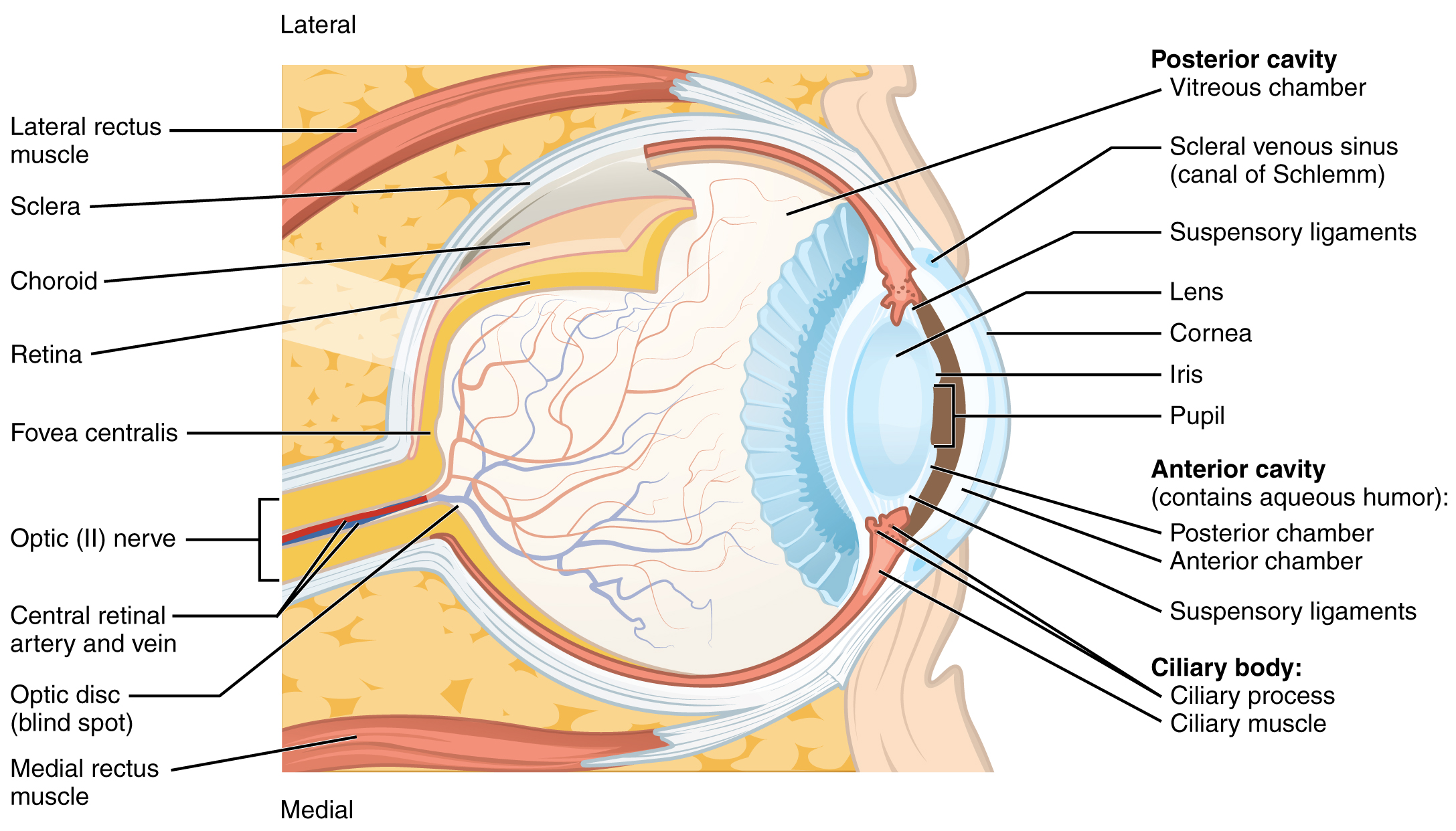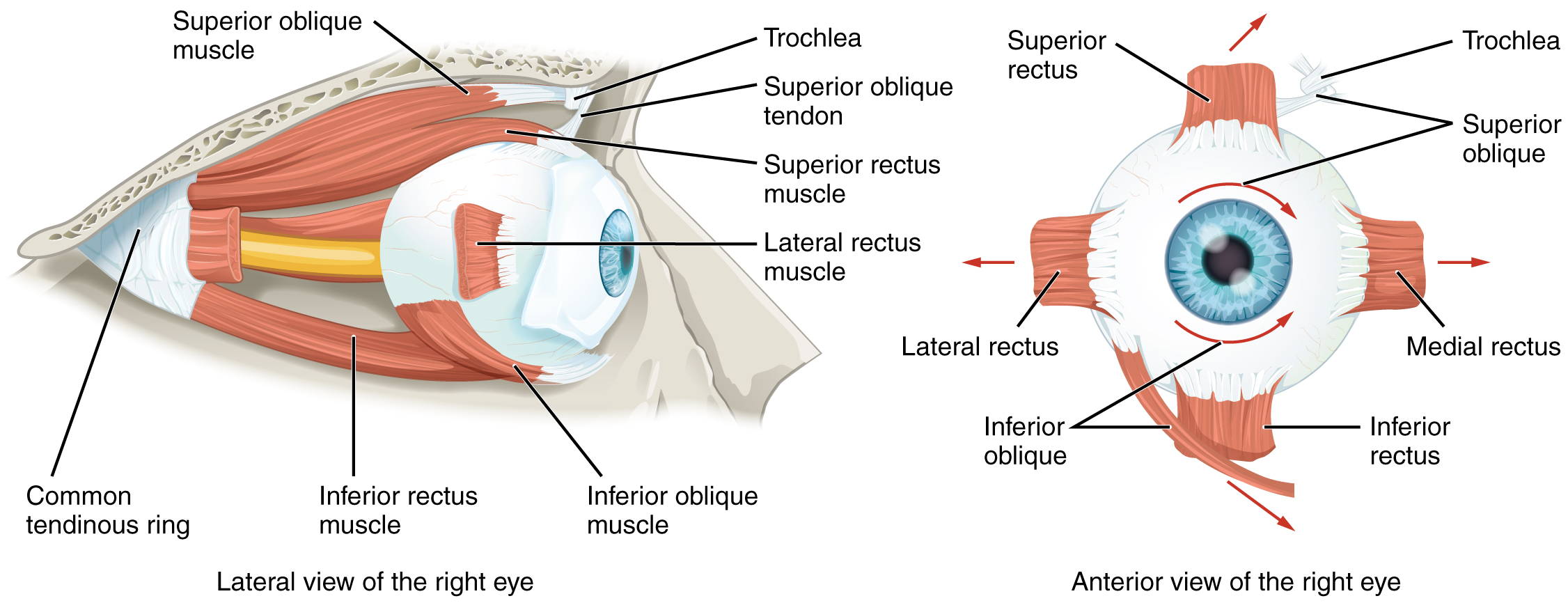Light and Eyeballs
81
Learning Objectives
Being able to describe different parts of a human eyeball.
Know which parts of the eyeball are involved in accommodation.
Know what a blind spot on the retina is, and where it’s located.
Structure of the Eye
The cornea is the transparent but alive, curved structure at the front of the eye, with embedded nerve endings for pain, touch and thermal sensation. It has 80% of the focusing power of the eye but is not flexible. The sclera is the white, hard outside of the eyeball. The aqueous humor is the low viscosity fluid behind the cornea, in front of the lens. The iris is the muscular, colored tissue that surrounds (and shapes) the pupil. The pupil is the hole through which light enters the eye. The lens is the flexible, clear substance that provides 20% of the focusing power of the eye. The ciliary (or lens) muscles are the muscles that control the shape (curvature) of the lens. The vitreous humor is the high viscosity fluid filling the eyeball. The retina is the sheet of neurons at the back of the eye. The fovea is where light from the center of gaze lands on the retina. The pigment epithelium is the black layer behind the retina where visual pigments are replenished.


20% of the focusing power of the eye is in the lens. Although it is only 20% of the focusing power, it is important because it is flexible and gives us the ability to accommodate. Accommodation is the ability to focus on things that are near or far away. Presbyopia is when the lens gets hard and can’t be squished by the ciliary muscles to focus on things that are near. Eventually, your arms won’t be long enough to hold reading material far enough away for your eyes to focus on it. Cataracts are the crystallization of the lens that scatters light, making it hard to perceive detail.
The blind spot is located on the retina where there are no photoreceptors (because axons heading for the optic nerve occupy that space). Your brain fills in the hole with a copy of what’s around the blind spot. The axons pass through the retina where the optic nerve begins and where there are no photoreceptors at the very back of the eye. This is what creates a “blind spot” in the retina and a corresponding blind spot in our visual field.
Exercises
CC LICENSED CONTENT, SHARED PREVIOUSLY
OpenStax, Anatomy and Physiology Chapter 14.1 Sensory Perception
Provided by: Rice University.
Access for free at https://openstax.org/books/anatomy-and-physiology/pages/14-1-sensory-perception
License: CC-BY 4.0
Adapted by: Ran Rice
Cheryl Olman PSY 3031 Detailed Outline
Provided by: University of Minnesota
Download for free at http://vision.psych.umn.edu/users/caolman/courses/PSY3031/
License of original source: CC Attribution 4.0
Adapted by: Ran Rice

